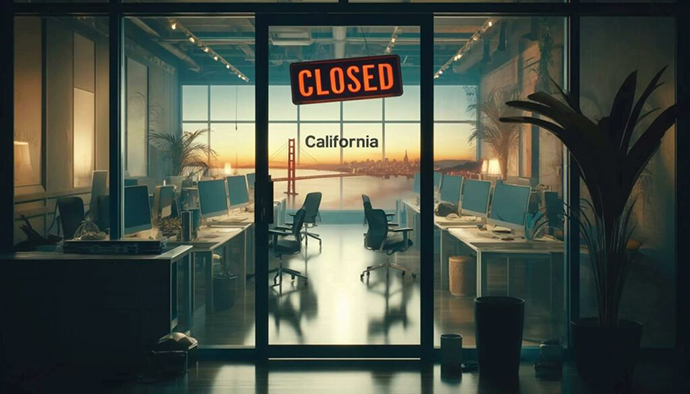New here?
The WC is a selection of five useful, interesting & notable insights handpicked by CIO Wyatt Cavalier and dropped into your inbox every Wednesday.
A quick ask from me – if you enjoy this post, please use whatever platform you have (Twitter, LinkedIn, your cycling mates) to recommend us. I’d really appreciate it.
Wyatt
Table of Contents
The best of 2022
They’ve taken their time about it, but our cultural overlords have come out with their picks of the finest cigars, whiskies, and wines for 2022.
Cigar of the year – H. Upmann No. 2

Coming in at a red hot $40 per cigar, the H. Upmann No. 2 is “one of the best-kept secrets in the Cuban cigar world.” Known as an “insider’s cigar,” the H. Upmann 2 looks identical to the more common Montecristo No. 2, because they’re rolled in the same pirámide format.
If you think wine reviews are a mouthful, check this one from Cigar Aficionado (yes, that is all one sentence):
Made in Havana, the H. Upmann No. 2 is sometimes misunderstood and dismissed as being too mild. It may not have been blended for strength, but smoking this cigar is a fully engaging experience with a room-filling aroma and mouth-filling texture that allows one to luxuriate in its layers of nutmeg, cinnamon and salted peanut flavor, all of which intensify, while, at the same time, showing a delicate floral quality that adds superb balance in a way that no other cigar this year could.
Sounds delicious.
Whisky of the year – Jack Daniel’s Bonded

Fair to say I was surprised to see Jack Daniel’s atop the 2022 whisky pyramid.
Whisky Advocate justifies their decision:
Our tasters found gentle aromas of dried herbs, cherry, banana, and well-integrated oak on the nose, leading to a bold palate of honeyed peanuts, brown sugar, dark chocolate, and melted caramel, all accented by peppery spice.
At only $30 a bottle, this must be a price adjusted methodology, because it gets good-but-not-great reviews .
For a real treat, shell out $200 for the 13th-ranked whisky, Miyagikyo Peated, which scores 95/100.
Wine of the year – 2019 Schrader Cellars Double Diamond Oakville Cabernet Sauvignon

Another value-based list, Wine Spectator, based their picks on “quality, value, availability and excitement.”
Double Diamond is immensely popular, and while prices have been steadily climbing (average sale price is $250 per bottle), there are still a few to be found for less than $100.
So what’s it like?
The dynamic flavors interact on the mid-palate with a vivid harmony, carrying through to the long floral finish, which lasts for up to a minute. With a pleasing acidity and fine tannic framework, this wine is very enjoyable today and should develop gracefully in the cellar for years to come.
If you’re celebrating (and who isn’t these days), Louis Roederer Brut Champagne Cristal was the priciest bottle of fizz in the top 100.
Dig deeper into 2022’s best indulgences:
Why are Americans dying so young?
This thread has been doing the rounds on the socials, and it presents some startling statistics about just how little time Americans spend on this planet.
NEW: I’m not sure people fully appreciate how dire the US life expectancy / mortality situation has got.
— John Burn-Murdoch (@jburnmurdoch) March 31, 2023
My column: https://t.co/dBIhT9eZLv
And some utterly damning charts.
1) at *every* point on the income distribution, Americans live shorter lives than the English. pic.twitter.com/pOoziEK5mZ
On average, an American earning $100k dies five years sooner than a Brit earning the same amount. And that’s not the biggest disparity. Compared to Japan, for example, it’s closer to a decade.
It’s easy to say it’s because America is pretty much the only country in the world without government-funded healthcare, and that’s certainly part of the problem. But there are other cultural differences that play into the damning statistics.
But the truth is something (I think) much darker. The problem is that a great many Americans don’t live to old age.
“One in 25 American five-year-olds today will not make it to their 40th birthday.”
Take any given kindergarten classroom, and one of those kids will be dead before they’re 40. 🤯
Or, put another way, young American adults are 4x more likely to die in their twenties than any other G20 country.
Why?
America is a country deeply rooted in individualism. Personal freedoms nearly always win when put against collective responsibility.
So with fewer safety nets, more at-risk Americans slip through the cracks. Some root causes:
- Diet – Bariatric surgery is free in most European countries
- Violence – Come on, it’s the guns
- Car crashes – Americans die in car crashes 3x more than Europeans
Rugged individualism plays a part in all the above.
One startling statistic I discovered researching this piece: The third-leading cause of death for American males is “unintentional injuries.” I checked several other countries’ stats, and that was nowhere to be found anywhere near the top.
A silver lining?
If you (as an American) can make it past your 40s, you’re in good shape. At the top end of the age bracket, Americans live just as long as citizens of other countries do. Phew.
Dig deeper into America’s life expectancy crisis:
Is ESG certification just a necessary evil?
Ever since I nearly set up a PADI dive shop in Vietnam 14 years ago, I’ve loved the certification business model. You — as a company — invent some certification that you convince people is important, and then you charge them through the nose for it.
Fairtrade and organic certifications are common examples you’re probably familiar with.
But this week I learned that companies routinely pay up to $500k per year for Environmental, Social, and Governance (ESG) certifications.
This is the cost of doing business now, with over 95% of companies saying they paid for the ratings under pressure from investors.
There are leaderboards for this, and an entire cottage industry has sprung up to help investors understand the ESG ratings of their portfolio constituents.
Which can be a good thing; we should look after the environment. We should look after people. We should make sure the board and executives aren’t up to anything shady.
But most of the ratings agencies in the space aren’t any good, with many reports rife with errors and omissions. It’s got so bad the EU is now cracking down on the (very well-paid) watchdogs.
The ratings companies have done a great PR job with investors, but it looks like they’re not much more than a necessary evil at this point.
Dig deeper into ESG ratings:
- Rate the Raters 2023: ESG Ratings at a Crossroads
- Hundreds of funds to be stripped of ESG rating
- Does ESG Investing Generate Higher Returns?
Like a record baby, right round round
This week, our art broker tipped me off about a fantastic new project by modern artist Damien Hirst.
The Beautiful Paintings is a “revolutionary new artwork from Damien Hirst that blurs the boundaries between digital and physical art creation, using generative and machine learning algorithms.“
Collectors choose the colours, styles, and patterns of the pieces, the black box computer generates something wonderful, and then the piece is printed out onto canvas.
Once it’s produced, Hirst signs the piece, and it’s shipped to you.
It’s certainly unconventional and probably not for everyone, but there will be a market for this.
Here’s one I generated.

They come in four sizes. A small 23cm piece is $1,500, and the largest 1m print will set you back $6k.
If you’re looking at it as an investment, our broker recommends “Definitely the big ones, and circles.“
There’s an argument to be made that this is a cash-grab by Hirst, and I’m not sure that’s completely wrong.
But, that can be true while also really enjoying the pieces themselves.
Dig deeper into Hirst’s generative art pieces:
- Damien Hirst Value: Top Prices Paid at Auction
- Damien Hirst’s ‘The Currency’ Was a Referendum on NFTs Vs. Traditional Art. The Result? A Resounding Preference for Traditional Art
- Damien Hirst Is No Longer Making His Signature Spin Paintings. Instead, He’s Unveiled a New A.I. Generator So You Can Make Them Yourself
PE Roll-ups are going away
Are roll-ups dead?
Last year, Amazon roll-up company Thrasio imploded.
The company, which was once valued at $10B, has struggled in an environment of rocketing interest rates and stagnating consumer demand.
And they’re not the only ones. PE roll-ups were huge over the last several years but there’s very little appetite for them today.
Quick refreseher: What is a roll up company?
It’s an investment strategy that buys up lots of smaller/inefficient/mom and pop companies, aggregates them into a mega-efficient corporate machine, and expands its valuation multiples based on increased revenues.
It’s a simple idea, but there’s a worry now that it only really works when interest rates are near zero. If an investor has to pay 12% interest rates on acquisitions, it’s a lot harder to turn a profit.
Which, in itself, competes against another market force:
When the economy sucks, you can buy lots of stuff for cheap. Businesses are failing, or at least it’s much harder today to turn a profit than it was two years ago. It’s a compelling reason to sell if you’re a mom or a pop running a garage door installation business.
But can an investor afford your small biz if they have to pay usurious debt? And what if we’re not at the bottom yet? If the super cheap asset is in a death spiral?
In this market, I think cash will be king. Anyone sitting on cash right now — and has the experience to pick out the wheat from the chaff — is in an excellent position to scoop up all these distressed assets.
Dig deeper into roll ups:
- In His First Interview, Thrasio’s New CEO Puts Company Turmoil In The Rear-View Mirror
- Roll-Up Merger: Overview, Benefits and Examples
- A new kind of PE fund plans to roll up German startups into potential unicorns and bigger exits
That’s all for this week, hope you enjoyed it. And if you did, be a friend and spread the word. We appreciate it
Cheers,
Wyatt
Disclosures
- This issue was sponsored by our good friends at Realbid and Invest with Roots
- Our ALTS 1 fund owns two copies of Damien Hirst’s Currency
- I own none of those delicious-sounding cigars, whiskies or wine. BUT, I do have a birthday coming up. Just saying, guys.












